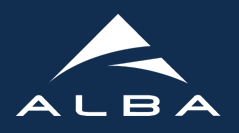ALBA mini Newsletter
News of July
Accelerators
http://www.cells.es/Divisions/Accelerators
- During the last week of June the machine was in scheduled shutdown. The main intervention done was the replacement of an absorber in the storage ring (SR) which was heating up more than expected. The cooling on this absorber has been optimized. Two more absorbers, at equivalent positions in the SR will also be replaced until the end of the year.
- A motor on the CIRCE undulator, which was having problems, was also exchanged.
- For the first two weeks of this run the storage ring has been running smoothly keeping an availability of 95%.
Beamlines
BL04-MSPD: Materials Science and Powder Diffraction.
- The first two weeks of June beamtime devoted to friendly user experiments at the high pressure endstation.
- The first high pressure users started experiments on June 27.
- We had a total of two weeks of regular operation with users at the high pressure endstation.
- The powder diffraction endstation commissioning started on the week of July 10th, the Mythen detector has been installed in the diffractometer and it is ready for commissioning (see Figure 1).

Figure 1. BL04-MSPD. The Mythen detector installed in the diffractometer for the powder diffraction endstation.
BL09-MISTRAL: X-Ray Microscopy.
- The TXM commissioning is progressing. After checking that the achievable spatial resolution in 2D with an Au test pattern is 30 nm, we have been measuring the drifts in several conditions taking images during hours. We have as well aligned the axis of rotation with the beam and we have done the first tomography of a W tip.
BL11-NCD: Non-Crystalline Diffraction.
- The beamline functionality has been demonstrated from the point of view of spatial resolution, timing of detectors, and fast shutters.
- The remote motion control of sample table and guard slits have been implemented. Cable lengths allow the movement of the sample table over a distance of 7 m.
- The two-dimensional, 2D, CCD detector with an active area of 210x210 mm2 is operational with a time resolution of 1 sec./frame. It is integrated in the data acquisition program developed at ALBA by our computing engineers.
- The station can be configured to do small angle scattering experiments, SAXS, with a maximum sample to detector distance of 7.4 m by use of the floor rail system. The 2D detector is then used to measure the SAXS signal in a range from ca. 0 degrees to perhaps as much as 5 degrees. By removing the X-ray flight tube the sample table can be moved along the floor rail and be placed in front of the 2D detector allowing a sample to detector distance of ca. 25 cm. Under these conditions the 2D detector temporarily serves as the wide angel x-ray scattering, WAXS, detector. The accessible angular range under current conditions for the WAXS detector is 1 – 15 degrees.
BL13-XALOC: Macromolecular Crystallography.
- We have collected and phased our first Fe SAD dataset (See Figure 2).
- We have collected our first atomic resolution dataset (0.95 Å).
- The BL13-XALOC team is grateful to all of the friendly users that provided us with crystal samples and tested the beamline: Prof. D. Reverter (IBB, Barcelona), Prof. G. Montoya (CNIO, Madrid), Prof. A. Cámara (U. de Almería), Prof. M. Coll (IBMB, Barcelona), Prof. N. Verdaguer (IBMB, Barcelona), Prof. I. Usón (IBMB, Barcelona), Prof. L. Campos (UPC, Barcelona), Prof. R. Boer (IBMB, Barcelona).
- On July 18th we started successful operation of the beamline with official users.
- User operation will resume by the end of September after the summer shutdown.
- The manufacturing of the detector cover has been finished and is about to be installed and tested.

Figure 2. BL13-XALOC. First Fe SAD-phased electron density map (the map is contoured at 1σ at 3 Å resolution). The crystal sample is a drug-like molecule bound to DNA (Courtesy of Prof. R. Boer, IBMB, Barcelona).
BL22-CLÆSS: Core Level Absorption & Emission Spectroscopies.
BL24-CIRCE: Photoemission Spectroscopy and Microscopy.
- The Near Ambient Pressure Photoemission experimental station has been installed and first tests have been done.
BL29-BOREAS: Resonant Absorption and Scattering.
During the last weeks:
- The third team of official users performed XAS, XMCD studies with satisfactory appraisal of the beamline performance, in particular the measurement of small XMCD Co signals in their samples.
- Issues and things to improve are related to low and intermediate temperature operation of the vector magnet, and suggestions for a better use of the cleaver and load-lock.
- Metal and organic molecule evaporators have been received, which will allow for sample in-situ fabrication.
- The HTS cryogen-free magnet for the scattering endstation has passed acceptance tests: remarkably, the aimed maximum field, 2 Tesla, can be achieved. The magnet has been featured at the Synchrotron Radiation Instrumentation meeting by its manufacturer, HTS-110 Ltd.
In the next two months, the main things to happen at BOREAS will be:
- Commissioning of ID energy pseudomotor developed by the control group, use of 3rd harmonic, pseudocounter for the encoder of the mono, in-house studies of RE-Co thin films (collaboration with Oviedo University), etc.
- Intervention in the monochromator to reinstall the medium and high energy gratings, solve a minor collision problem.
- Continuation of the diagnostic, analysis of some observed noise in the encoder of the monochromator (grating pitch encoder).
- Various cabling works to remove temporary cables, assure exclusivity of some electrical supplies, some cables for safety and eps elements, and control and cabling work for the endstations fore-vacuum system.
- Bakeout of the monochromator after the intervention works.
- Further commissioning of vector magnet cryostat, including noise issues associated to temperature feedback loop.
- Analysis of solutions to improve condensation issues at various parts in the endstation.
- Delivery of the UHV vessel and the cryomanipulator for the scattering endstation.

